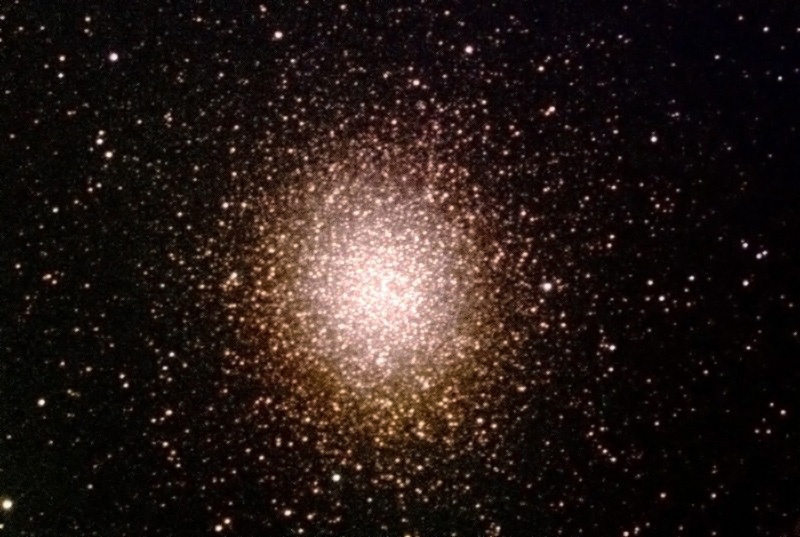
Omega Centauri is the finest example of a globular star cluster in the sky. However, it is so far south, that it is not easy to observe from most locations in the northern hemisphere. It is visible to the naked eye as a 4th magnitude fuzzy star. Early in the 17th century it was catalogued by Bayer as a star, which is why it was designated with the greek letter "Omega." It was not identified as a star cluster until 1677 by Halley (the same man for whom Halley's Comet is named).
Omega Centauri is located about 15,000 to 22,000 light years away. The cluster has a diameter of about 350 light years. The massive sphere defined by this cluster contains in excess of one million aged stars, and a total mass of half a million solar masses. Omega Centauri contains more variable stars than any other known globular cluster, with the single exception of M3 in Canes Venatici.
The constellation Centaurus has a number of awesome deep sky objects to view with a telescope. The impressive galaxy known as Centaurus A is located only 4 and 1/2 degrees away from Omega Centauri. Alpha Centauri is the closest star to our solar system that is visible to the naked eye.
This is a tri-color CCD image. The images were taken using a Takahashi FS-128 refractor, an SBIG ST-8 CCD, and a Homeyer color filter wheel.
NGC 5139
Constellation: Centaurus
RA: 13h 26m 40.6s Dec: -47d 28' 16"
March 16, 1999
Images by Sid Leach
Iola, Texas
Recent Images.
Complete list of images.
Description of equipment used to acquire images.
Home
Feedback and comments should go to Sid